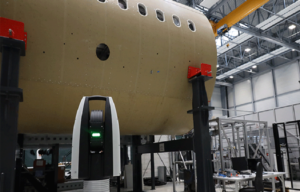History of Hong Kong stock trading

Hong Kong is one of the most important financial centres in the world, and its stock market is a significant player in global trading. The Hong Kong Stock Exchange (HKEX) was founded in 1891, making it one of the oldest exchanges in Asia. Today, it remains highly relevant, with some of the city’s stock indices being the barometer for Asian stock performance.
In this article, we’ll look at the history of HKEX trading and some of the critical events that have shaped it over the years. We’ll also explore some challenges HKEX traders face and how they’ve adapted to changing market conditions. So, if you’re interested in learning more about Hong Kong’s stock market, read on.
The history of HKEX trading
It can be traced back to 1891 when the Association of Stockbrokers in Hong Kong was formed. The association was set up to regulate stock trading and help promote the development of the colony’s financial markets. In those days, trading stocks was done by open outcry in a physical space known as the Stock Exchange.
The first formal stock market in Hong Kong was established in 1914, with the launch of the Hong Kong Stock Exchange. This exchange was modelled on the London Stock Exchange and initially only allowed Hong Kong Stockbrokers’ Association members to trade. However, it soon began to attract foreign investors and listed companies from all over Asia.
During the 1920s, the HKEX became one of the busiest exchanges in Asia. Due to the colony’s status as a free port, there were no restrictions on the flow of capital, making Hong Kong an attractive destination for foreign investors looking to make quick profits.
However, the stock market crash of 1929 and the ensuing global depression hit the HKEX hard. Trading activity plunged, and many listed companies went bankrupt. It wasn’t until 1935 that trading finally began to pick up again.
The outbreak of World War II brought further turmoil to the HKEX. The Japanese occupation of Hong Kong from 1941 to 1945 disrupted trading and caused many brokers to flee the colony. After the war, trading resumed, but it was slow at first as the colony rebuilt itself.
The 1950s were a period of rapid economic growth for Hong Kong, and it led to a boom in stock trading, with the number of listed companies increasing from just over 100 to more than 500 by 1957. It was also a time of significant change for theHKEX, as it moved from being a purely local exchange to one that was increasingly international in scope.
In the 1960s and 1970s, Hong Kong became an important centre for the listing of offshore companies, and this was due to its low taxes and easy regulatory regime. As a result, the HKEXbecame known and boomed.
This period also saw the development of new financial instruments such as derivative products and interest rate futures. These products helped to hedge risks and attracted more foreign investors to the HKEX.
The 1980s were a challenging decade for Hong Kong, as the colony was hit hard by the global recession, resulting in a sharp fall in stock prices and unemployment. However, the HKEX managed to weather the storm and emerged more vital than ever.
In the 1990s, the HKEX became a truly international exchange with the listing of companies from all over the world. This globalisation of the exchange continued in the 2000s, as it became one of the world’s largest and most important financial markets.
The HK market today
Today, the HKEX is a leading international exchange with over 2,000 listed companies. It offers various products and services, including equities, derivatives, and commodities. HKEX is also home to the world’s second-largest stock market by value, the Hang Seng Index (HSI). This index tracks the performance of the top 50 companies listed on the HKEX.
Despite its size and importance, HKEX faces some challenges. These include competition from other exchanges, volatile markets, and the ever-changing regulatory environment. However, HKEX has shown itself to be a resilient exchange adaptable to change, which has helped it maintain its position as a premier global financial market.
In the years ahead, HKEX will likely play a leading role in the global financial system. It will provide ample opportunities for investors looking to tap into this dynamic and exciting market.
In conclusion
The history of Hong Kong stock trading is a long and eventful one. From its humble beginnings as a local exchange to its current status as a global financial market, HKEX has come a long way. Despite challenges, it has managed to maintain its position as one of the world’s premier exchanges. It makes it an attractive destination for investors looking to tap into the dynamic and exciting world of Asian finance.








